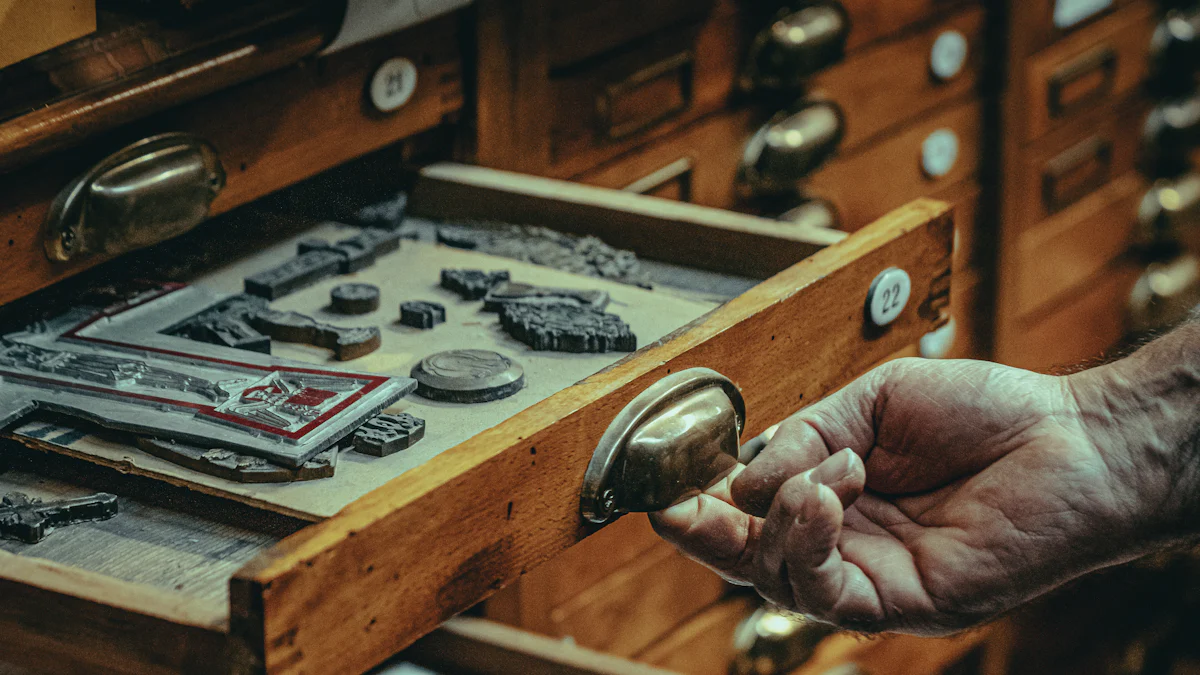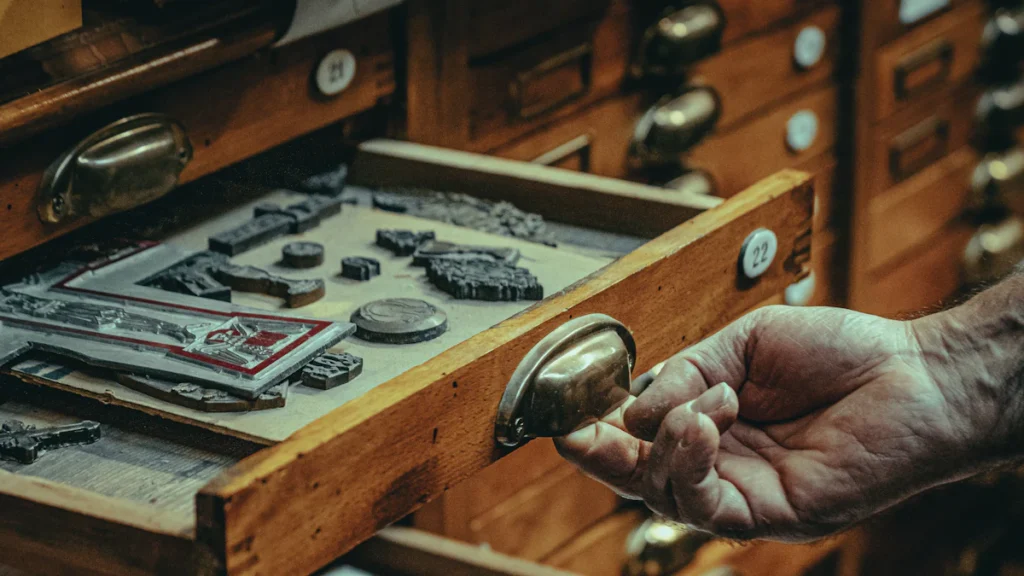
A rock display case serves as more than just a storage solution. It protects your collection from dust and damage while showcasing its unique beauty. Selecting the right display case requires careful thought. The size of your collection determines how much space you need. Materials like glass or acrylic ensure visibility and protection. Budget also plays a key role in finding the perfect fit. By choosing wisely, you can highlight your collection’s charm and preserve its quality for years to come.
Key Takeaways
Assess your rock collection’s size and type to determine the appropriate display case that meets your needs.
Choose materials like glass or acrylic for visibility and protection, ensuring your specimens are safe from dust and damage.
Consider the purpose of your display—whether for personal enjoyment, education, or preservation—to guide your design choices.
Look for features such as adjustable shelves and proper lighting to enhance the visibility and organization of your collection.
Balance your budget with quality; investing in a durable display case can protect your collection and enhance its aesthetic appeal.
Regularly maintain and update your display to keep it fresh and engaging, rotating specimens and ensuring cleanliness.
Incorporate decorative elements that complement your collection and space, making your display a captivating centerpiece.
Understanding Your Rock Collection’s Needs
Choosing the perfect display for your rocks begins with understanding your collection. Each rock or mineral specimen holds a story, and your display should reflect its significance. By evaluating your collection’s size, type, and purpose, you can make informed decisions that enhance its presentation and preservation.
Assessing the Size and Scope of Your Collection
Start by evaluating how many rocks or mineral specimens you own. A small collection may fit in a compact rock collection box, while a larger one might require a spacious display case with multiple compartments. Consider the physical size of your specimens as well. Larger rocks need more space to avoid overcrowding, while smaller ones may benefit from sections or dividers to keep them organized.
If your collection is still growing, plan for future additions. A display case with adjustable shelves or expandable compartments can accommodate new pieces without disrupting the arrangement. This foresight ensures your display remains functional and visually appealing as your collection evolves.
Identifying the Types of Rocks in Your Collection
Understanding the types of rocks or minerals in your collection helps you choose the right display features. Fragile specimens, such as delicate crystals, require cases with protective materials like glass or acrylic to shield them from dust and damage. On the other hand, robust stones may not need as much protection but can benefit from proper lighting to highlight their textures and colors.
For example, a collector once discarded labels from their mineral specimens, focusing only on their beauty. Later, they realized the importance of identifying rare minerals from specific localities. Labels or tags can add value to your display by providing context about each piece, making it more educational and engaging for viewers.
Determining the Purpose of Your Rock Collection Display
Ask yourself why you want to display a rock collection. Is it to showcase your passion to others, preserve your specimens, or simply enjoy their beauty in your personal space? The purpose of your display influences its design and functionality.
If you aim to educate others, include labels or descriptions for each specimen. These details can transform your display into an informative exhibit. For personal enjoyment, focus on aesthetics. Choose a case that complements your room’s decor and enhances the visual appeal of your collection. If protection is your priority, prioritize durability and features like dust-proof enclosures.
Building relationships with trusted dealers can also help you find unique specimens to enhance your display. Letting them know your interests may lead to opportunities to acquire rare or high-quality pieces that align with your display goals.
By understanding your rock collection’s needs, you can create a display that not only protects your specimens but also tells their story. This thoughtful approach ensures your collection remains a source of pride and inspiration.
Exploring Types of Rock Display Cases

When it comes to showcasing your rock collection, the type of display case you choose plays a significant role in both protection and presentation. Understanding the materials, styles, and customization options available will help you select the best fit for your needs.
Materials: Glass, Acrylic, and More
The material of your display case determines its durability, visibility, and overall aesthetic. Glass and acrylic are the most popular choices for rock collectors. Glass cases offer a classic and elegant look while providing excellent protection against dust and damage. They are ideal for preserving delicate mineral specimens, as the sturdy material prevents accidental contact.
Acrylic cases, on the other hand, are lightweight and shatter-resistant. They provide similar visibility to glass but are easier to handle and transport. This makes them a practical option for collectors who frequently rearrange or move their displays. Some collectors also opt for wooden or metal frames combined with glass or acrylic panels to add a touch of sophistication.
Samantha, a collector, noted, “The cases help to clearly view, protect, and highlight the crystals’ natural beauty from multiple angles.” This highlights the importance of choosing materials that enhance the visual appeal of your collection.
Styles and Designs for Displaying a Rock Collection
Display cases come in various styles and designs to suit different preferences and spaces. Shadow boxes with shelves are a popular choice for organizing smaller mineral specimens. These cases allow you to arrange your collection neatly while keeping each piece visible. For larger collections, multi-tiered cases with adjustable shelves provide flexibility and maximize space.
Some designs focus on aesthetics, featuring decorative elements or unique finishes. For example, a dark laminate finish can create contrast, making brightly colored rocks stand out. Conversely, lighter finishes work well in well-lit rooms, blending seamlessly with the decor. Museums often use minimalist designs to keep the focus on the specimens, a strategy you can adopt for a clean and professional look.
Custom vs. Pre-made Rock Display Cases
Choosing between custom and pre-made display cases depends on your specific needs and budget. Pre-made cases are readily available and come in standard sizes and designs. They are a cost-effective solution for beginners or those with smaller collections. Many pre-made options include features like compartments, lighting, and dust-proof enclosures.
Custom cases, however, offer the advantage of personalization. You can design a case tailored to your collection’s size, shape, and style. This option is ideal for collectors with unique or irregularly shaped specimens. Customization also allows you to match the case to your room’s decor, creating a cohesive and visually appealing display.
A reputable display case manufacturer can guide you through the customization process, ensuring your case meets both functional and aesthetic requirements.
By exploring the materials, styles, and customization options available, you can find a rock display case that not only protects your mineral specimens but also enhances their beauty. The right choice will transform your collection into a captivating showcase.
Key Features to Look for in a Rock Display Case
When selecting a rock display case, focusing on specific features can enhance both the protection and presentation of your mineral specimens. These features ensure your collection remains safe while showcasing its unique beauty.
Lighting Options for Enhanced Visibility
Proper lighting transforms your display into a captivating showcase. It highlights the textures, colors, and details of your mineral specimens, making them more visually appealing. LED lighting is an excellent choice for rock collections. It emits minimal heat, reducing the risk of damage to delicate specimens. Additionally, LED lights are energy-efficient and provide consistent illumination.
Avoid lighting options that produce ultraviolet (UV) or infrared (IR) rays. These can degrade the quality of your specimens over time. As one expert in museum display cases noted, “Lighting your collection is a tricky proposition. On one hand, you want your collection well-lit for visitors to see, but the act of lighting adds a great deal of issues such as Ultraviolet and Infrared degradation.” Opting for UV-filtered lights or placing your display case away from direct sunlight can help preserve your collection.
Consider adjustable lighting systems. These allow you to focus light on specific specimens, enhancing their visibility without overwhelming the entire display. A well-lit display not only protects your collection but also elevates its aesthetic appeal.
Durability and Protection for Your Collection
Durability is a critical factor when choosing a display case. The materials used should provide long-lasting protection for your mineral specimens. Glass and acrylic are popular choices due to their strength and transparency. Glass offers a classic look and excellent resistance to scratches, while acrylic is lightweight and shatter-resistant, making it easier to handle.
For larger or heavier collections, glass may be the better option. As one expert explained, “Depending on case size and style, you may need to move toward glass as your solution.” This ensures the case can support the weight of your specimens without compromising safety.
Dust-proof enclosures are another essential feature. They prevent dirt and debris from accumulating on your specimens, preserving their natural beauty. Cases with tight seals or magnetic closures offer added protection against environmental factors. By prioritizing durability, you can safeguard your collection for years to come.
Accessibility and Ease of Use
A functional display case should provide easy access to your collection. This makes it simple to rearrange, clean, or add new specimens. Look for cases with sliding doors, hinged panels, or removable lids. These features allow you to interact with your collection without risking damage.
Adjustable shelves enhance usability by accommodating specimens of varying sizes. They enable you to organize your collection efficiently, ensuring each piece has its own space. This not only improves the display’s appearance but also prevents overcrowding.
Ease of maintenance is equally important. Choose materials that are easy to clean, such as acrylic or tempered glass. Regular cleaning keeps your display looking pristine and ensures your mineral specimens remain the focal point.
By focusing on lighting, durability, and accessibility, you can select a rock display case that meets your needs. These features enhance the functionality and visual appeal of your collection, creating a display that you can enjoy and share with others.
Budgeting for Your Rock Collection Display
Budgeting plays a crucial role in selecting the right display for your rock collection. Whether you are a beginner or an experienced collector, understanding how to balance cost and quality ensures you make a wise investment. This section explores affordable options and high-end alternatives to help you find the perfect fit for your needs.
Balancing Cost and Quality
When choosing a display case, balancing cost and quality is essential. A low-cost option may save money initially, but it might not provide the durability or protection your collection requires. Affordable cases often use materials like basic acrylic, which can scratch easily or cloud with frequent cleaning. These cases may also have shorter lifespans, making them less suitable for long-term use.
On the other hand, higher-quality cases, often made of tempered glass or premium acrylic, offer better durability and clarity. They resist scratches and maintain their appearance over time. Investing in a well-made case ensures your collection remains safe and visually appealing. Consider your priorities—whether you value affordability or longevity—and choose accordingly.
“A good display case is an investment in preserving your collection,” says a seasoned collector. This perspective highlights the importance of considering both cost and quality when budgeting.
Affordable Options for Beginners
If you are new to collecting, affordable display cases provide a practical starting point. Many pre-made cases are budget-friendly and come with basic features like compartments or dividers. These cases are ideal for small collections or those stored in a compact rock collection box. They allow you to organize and showcase your specimens without a significant financial commitment.
Affordable cases often use lightweight materials like standard acrylic. While these materials may lack the durability of high-end options, they still offer adequate protection for beginner collections. Look for cases with dust-proof enclosures to keep your specimens clean and safe.
For those on a tight budget, consider DIY solutions. Repurposing items like shadow boxes or small shelves can create an inexpensive yet functional display. These options let you customize your setup while keeping costs low.
Investing in High-End Display Cases
For serious collectors, high-end display cases provide unmatched quality and sophistication. These cases often feature premium materials like tempered glass, which offers superior durability and clarity. Unlike cheaper alternatives, high-end cases resist scratches and maintain their pristine appearance even with regular use.
High-end cases also include advanced features such as built-in lighting, adjustable shelves, and secure locks. These enhancements elevate the presentation of your collection while ensuring its safety. Custom display cases, tailored to your collection’s unique needs, are another excellent option for those willing to invest.
While the upfront cost of a high-end case may seem significant, the long-term benefits outweigh the expense. A durable, well-designed case protects your collection for years, reducing the need for replacements. It also enhances the aesthetic appeal of your display, making it a centerpiece in your space.
By carefully evaluating your budget and priorities, you can find a display case that meets your needs. Whether you choose an affordable option or invest in a high-end case, the right choice will protect and showcase your rock collection effectively.
Tips for Organizing and Maintaining Your Rock Display Case
A well-organized and maintained rock display case not only enhances the visual appeal of your collection but also ensures its longevity. By following these tips, you can create a captivating showcase that remains in excellent condition over time.
Organizing Your Collection for Maximum Impact
Organizing your collection effectively helps you display a rock collection in a way that highlights its uniqueness. Start by categorizing your specimens based on type, size, or color. This method creates a cohesive and visually appealing arrangement. For example, grouping vibrant crystals together can draw attention to their brilliance, while arranging larger rocks separately prevents overcrowding.
Use compartments or dividers to separate each specimen. This approach protects delicate pieces from accidental damage and keeps the display neat. Adjustable shelves offer flexibility, allowing you to accommodate rocks of varying sizes. If you have a growing collection, consider a rock collection box or a display case with expandable sections to plan for future additions.
Labeling your specimens adds an educational element to your display. Include details like the rock’s name, origin, or unique features. These labels provide context and make your collection more engaging for viewers. A quick and easy way to display this information is by using small, clear tags that don’t obstruct the view of your rocks.
Maintaining and Cleaning Your Display Case
Regular maintenance preserves the quality of your display and protects your collection. Dust and dirt can accumulate over time, dulling the appearance of your specimens. Clean the case’s surfaces with a soft, lint-free cloth to avoid scratches. For glass or acrylic panels, use a gentle cleaning solution designed for these materials. Avoid harsh chemicals that could damage the case or the rocks.
Inspect your display case periodically for signs of wear or damage. Check for loose hinges, cracks, or seals that no longer provide a dust-proof enclosure. Addressing these issues promptly ensures your collection remains safe and secure.
Proper lighting also requires maintenance. Dust the light fixtures regularly to keep them bright and effective. If your case uses LED lights, replace any dim or malfunctioning bulbs to maintain consistent illumination. Keeping the lighting in top condition enhances the visibility and beauty of your collection.
Rotating and Updating Your Rock Collection Display
Rotating your specimens keeps your display fresh and interesting. Swap out rocks periodically to showcase different pieces from your collection. This practice not only prevents certain specimens from fading due to prolonged exposure to light but also allows you to enjoy the variety within your collection.
Updating your display with new acquisitions adds excitement and keeps it dynamic. When adding new specimens, rearrange the layout to maintain balance and harmony. Consider incorporating seasonal themes or special arrangements to highlight specific rocks during certain times of the year.
If space becomes an issue, use drawers alongside your display case. Fully extendable drawers provide additional storage while keeping specimens organized and protected. This combination of display cases and drawers offers a practical solution for managing a growing collection.
By organizing, maintaining, and updating your rock display case, you can create a showcase that reflects your passion and dedication. These efforts ensure your collection remains a source of pride and inspiration for years to come.
Enhancing the Aesthetics of Your Rock Display Case

Creating a visually appealing rock display case elevates your collection from simple storage to an artistic showcase. By focusing on design, functionality, and decorative elements, you can transform your display into a centerpiece that complements your space and highlights the natural beauty of your specimens.
Choosing a Design that Complements Your Space
The design of your display case should harmonize with the room where it will be placed. A well-chosen design not only enhances the aesthetics of your collection but also integrates seamlessly into your home or office decor. For example, a sleek glass display case works well in modern spaces, offering a minimalist look that keeps the focus on your rocks. Glass cases also provide excellent viewing angles and protection, making them a popular choice among collectors.
If your space leans toward a rustic or traditional style, consider wooden frames with glass or acrylic panels. These designs add warmth and character while maintaining the functionality of a display case. The base of the case is another critical element. A dark or neutral-colored base can create contrast, helping vibrant crystals and minerals stand out. Museums often use this technique to draw attention to their exhibits, a strategy you can replicate in your own collection.
Using Adjustable Shelves and Compartments
Adjustable shelves and compartments allow you to customize your display case to fit your collection’s unique needs. Rocks and minerals come in various shapes and sizes, so flexibility in shelving ensures that each specimen has its own space. This prevents overcrowding and keeps the display organized.
For larger specimens, remove or lower shelves to create more room. Smaller rocks benefit from divided compartments, which keep them secure and neatly arranged. Adjustable features also make it easier to accommodate new additions to your collection. As your collection grows, you can rearrange the layout without needing a new case.
“Versatile display cases highlight the natural beauty of crystals from multiple angles,” as noted by collectors. This versatility ensures that your collection remains dynamic and visually engaging.
Incorporating Decorative Elements
Adding decorative elements to your display case enhances its overall appeal. Consider incorporating lighting to highlight the textures and colors of your rocks. LED lights are an excellent choice, as they emit minimal heat and provide consistent illumination. Position the lights to focus on key specimens, creating a dramatic effect that draws attention.
You can also use decorative backdrops or liners to complement your collection. A velvet or felt lining adds a touch of elegance and prevents scratches on delicate specimens. For a more thematic approach, choose backdrops that reflect the origin of your rocks, such as a desert landscape for sandstone or a mountainous scene for quartz.
Personal touches, like small plants or framed labels, can further enhance the display. These elements add depth and context, making your collection more engaging for viewers. For inspiration, visit museums or galleries that feature rock and mineral exhibits. Observing professional displays can spark ideas for your own setup.
By focusing on design, functionality, and decoration, you can create a rock display case that is both practical and visually stunning. This thoughtful approach ensures your collection becomes a source of pride and admiration.
Choosing the right rock display case transforms your collection into a stunning showcase. By understanding your collection’s needs, you ensure each piece is displayed and protected effectively. Exploring different types of cases helps you find one that suits your style and space. Prioritizing features like lighting and durability enhances both functionality and aesthetics. Always invest in the best quality you can afford, as it ensures long-term value and protection. Take time to evaluate your options. A well-chosen case not only highlights the beauty of your rocks but also preserves them for years to come.
FAQ
What are the best ways to display rocks and minerals?
The best way to display rocks and minerals is by using display cases. These cases protect your collection from dust and damage while showcasing their beauty. Glass display cases, often used in museums, provide excellent visibility and keep delicate specimens safe.
How can I showcase my rock collection effectively?
You can showcase your rock collection by using display cases with shelves. These cases help you organize and display various items like arrowheads, crystals, fossils, and trinkets. Shelves allow you to arrange your collection neatly, making it visually appealing and easy to admire.
What factors should I consider when displaying rocks and minerals?
When displaying rocks and minerals, consider factors like lighting, setting, and the angle of display. Proper lighting enhances the colors and textures of your specimens. The setting and angle of display can highlight unique features, ensuring your collection looks its best.
Why are display cases important for rock collections?
Display cases are essential for organizing and showcasing your rock collection. They protect your specimens from dust and accidental damage while providing a clear view of their natural beauty. Whether you’re a seasoned geologist or a beginner, a display case elevates the presentation of your collection.
How do display cases enhance the presentation of rock and mineral specimens?
Display cases enhance the presentation by offering clear visibility and protection. They highlight the natural beauty of crystals and minerals from multiple angles. With features like lighting and adjustable shelves, display cases create a professional and captivating showcase.
What types of display cases are available for rock collections?
There are several types of display cases for rock collections. Popular options include acrylic cases, glass curios, and stands for fossils. Each type offers unique benefits, so you can choose one that suits your collection’s size, style, and purpose.
What are the benefits of creating a rock collection display?
A rock collection display provides both artistic and educational value. It allows you to showcase stones, gems, and minerals in an organized and visually appealing way. From simple arrangements to professional-grade setups with lighting and labels, a display can reflect your passion and knowledge.
Can lighting improve the appearance of my rock collection?
Yes, lighting plays a crucial role in enhancing the appearance of your rock collection. LED lights are ideal as they emit minimal heat and provide consistent illumination. Proper lighting highlights the textures, colors, and details of your specimens, making them more captivating.
How can I protect fragile rocks in my collection?
To protect fragile rocks, use display cases made of durable materials like glass or acrylic. These cases shield your specimens from dust and accidental contact. For added safety, consider cases with dust-proof enclosures and compartments to keep delicate pieces secure.
Are custom display cases worth the investment?
Custom display cases are worth the investment if you have unique or irregularly shaped specimens. They allow you to tailor the design to your collection’s specific needs. Custom cases also offer the flexibility to match your space’s decor, creating a cohesive and personalized display.

